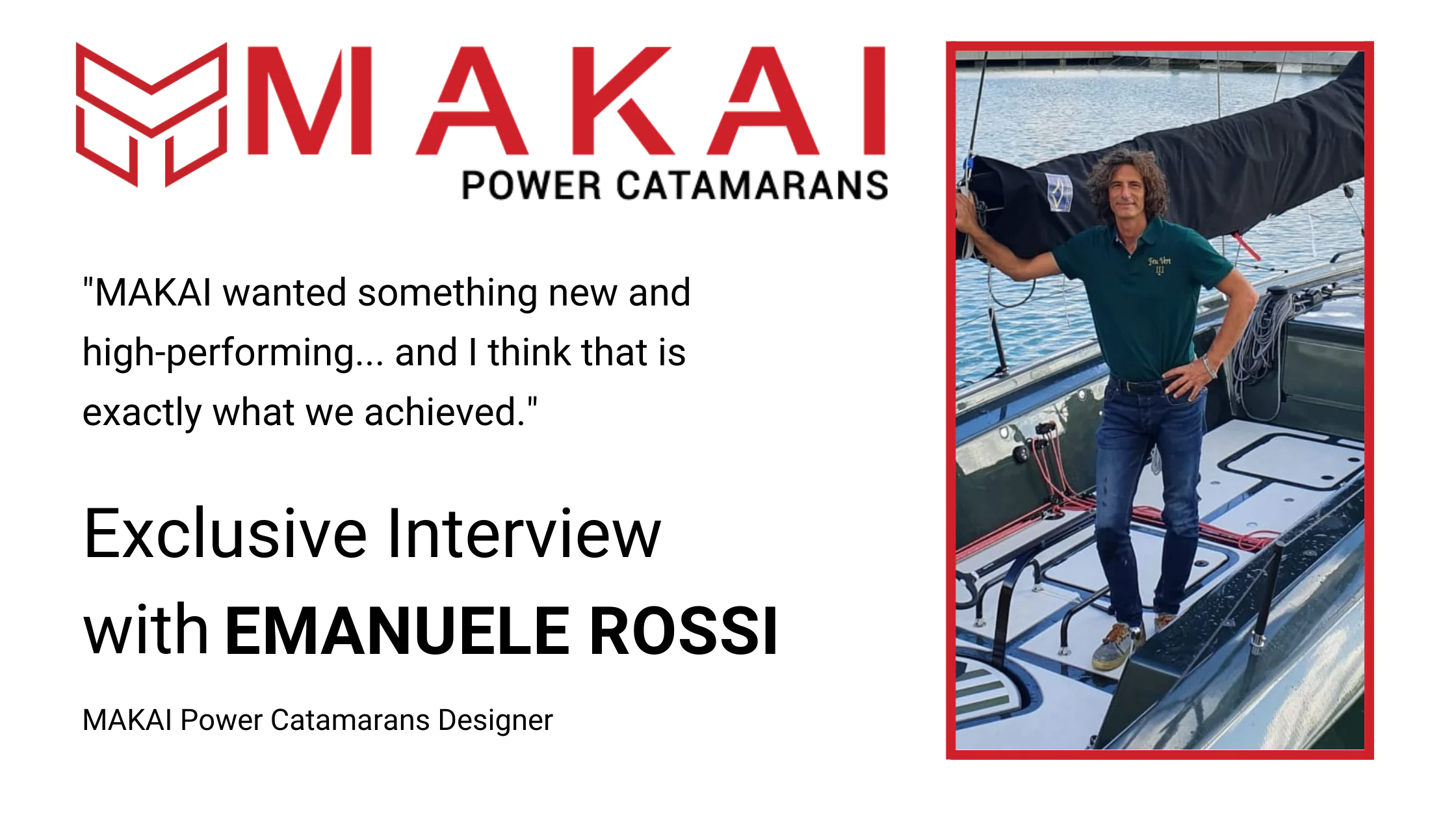MAKAI Catamarans design explained
In this exclusive interview, Emanuele Rossi, Designer and Engineer at ERYD YACHT DESIGN, discusses the catamarans design philosophy behind MAKAI’s unique hulls, the distinctively Italian exterior, and sophisticated interior.
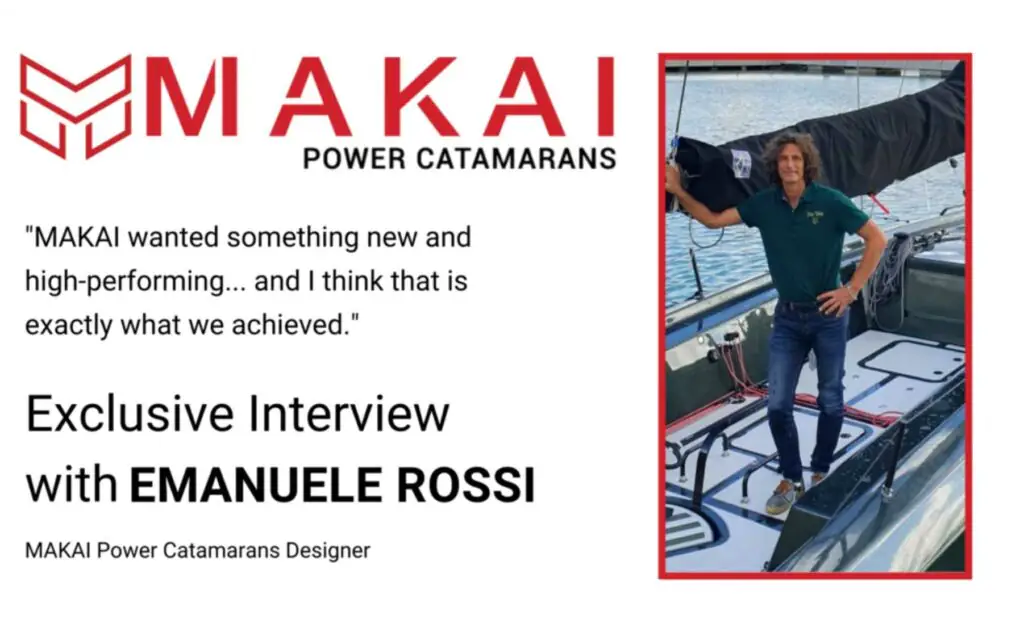
ERYD has a large portfolio, having worked with production builders including Expression, Garcia Yachts and AUREUS Yachts, as well as larger vessels including the BLUE DIAMOND 100, and the Bradley Power Catamaran. A staple of the Italian (and indeed international) design scene since 2006, Emanuele Rossi has successfully developed numerous power and sailing projects from conception to final production. Emanuele has ensured a clear focus on remarkable exterior lines meeting optimised performance, and interiors to wow the uninitiated.
We took the opportunity to ask Emanuele a few questions to help you get to know him better and understand more about his design history and his thoughts regarding designing MAKAI models.
Could you tell us more about yourself, your background, and your experience? Did you know the founders of Makai before the start of the project?
After graduating in naval engineering – where I doubled on both sailing and motor yachts (Genova, Italy), I collaborated as a design manager in various design studios and shipyards – especially in the south of France, a hotbed of catamaran innovation. For many years, I specialised mainly in the preliminary and executive drawings of maxi yachts – that’s where I really built my reputation. In the same period, I raced in the IMS professional circuit and other one-design series, participating in various Italian, European, and World championships. I believe this sailing experience was important and formative for a naval designer.
I created my own company in 2005 – ERYD SRL (Emanuele Rossi Yacht Design) which deals in comprehensive “360 degree” design for shipyards and custom yacht customers. From this point, I launched my own line of daysailers, including the ERYD 30, ERYD 30 Open, and ERYD 32.
It was thanks to one of the boat shows where I was exhibiting that I met Jay Nolan – we established a professional relationship of trust well before the birth of MAKAI Yachts. In the same way, I met Kresimir Secak that was interested in our project of a full carbon 50 ‘sailing yacht.
Can you tell us about your role in realizing the MAKAI M37?
The story of realizing the MAKAI M37 involves the creation of the boat shapes from scratch, paying close attention to interpreting the boat owner’s needs in the best possible way, and always trying to positively surprise the client once the final layout is reached.
It is not only a question of design but also about the distinct shape of the hulls, but especially the hydrodynamics, and performance.
How did you collaborate with the founders of MAKAI to realize their vision of the boat?
As previously mentioned, I have paid a lot of attention to realizing the expectations of the MAKAI team thanks to their precise and helpful inputs of their vision for the boat. The power catamaran is an extremely exciting platform from which to realise an unusual and progressive design. MAKAI wanted something new and high-performing. They also had specific and creative ideas for the interior – especially regarding fitting the large beds in the cabins (this is truly remarkable) and we needed to make it aesthetically attractive. So in summary we wanted a high-performing and elegant exterior, and a remarkably spacious but sophisticated interior and I think that is exactly what we achieved.
Why a Power Catamaran?
Why not? It is a booming sector of the nautical market and it is an exciting challenge for me, as I had to focus on both the aesthetics and functionality. The power catamaran sector is a “land unexplored” in which one can still be truly innovative.
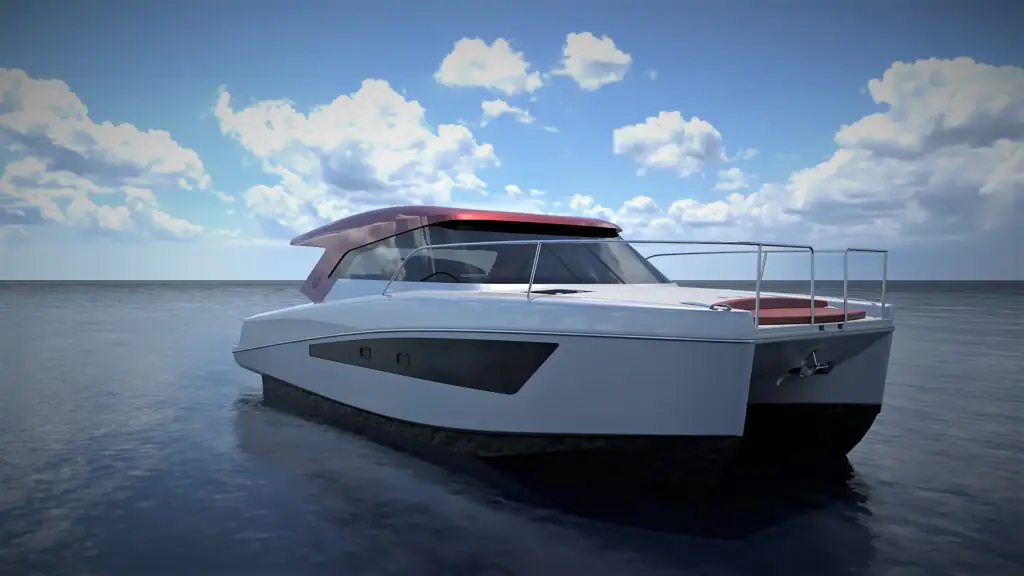
“The MAKAI M37 has an excellent balance between aesthetics and habitability.”
Can you tell us about the process of designing the MAKAI M37?
The process of designing the M37 is based on the MAKAI team’s needs and understanding exactly the potential of the boat’s performance based on its specifications. Once the main parameters, such as internal volumes, displacement, general ergonomics of the cockpit, and dimensions have been established, it is then possible to focus on designing the best performing hulls possible while maintaining a fluid and elegant design. It is a constant cycle of optimising performance, while beautifying the lines.
What differentiates the MAKAI M37 design from other power catamarans on the market?
I think the main differentiating feature of the MAKAI M37 includes avoiding the cubic shape that many catamarans of this size are likely to have. We never considered making this catamaran to be like any competitor. It’s a new spirit. The MAKAI M37 has an excellent balance between aesthetics and habitability.
What is the most unique feature of the Makai M37 power catamaran?
I think there is not one feature that is most unique, but it is more the combination of many features that makes the difference. The asymmetrical hulls optimize performance without losing habitability, the cockpit and cabins are very functional as every millimetre is used, large sunbathing areas both on the deck and in the cockpit offer high comfort, the stern platform integrated into the design of the boat makes it more spacious… I also really admire the hard top as it gives the boat a strong personality.
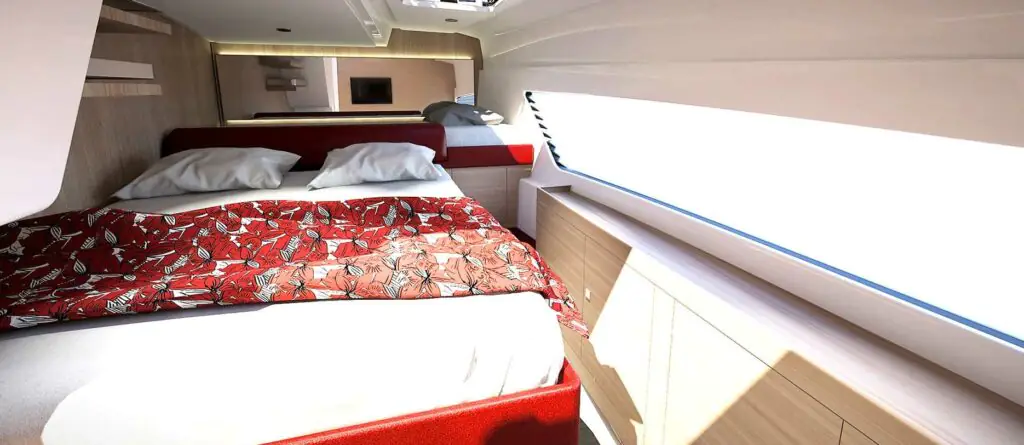
M37 looks very sporty, could you please elaborate more on styling and the obvious “Italian flair“ that we can see in the M37?
The sportiness of the design is inspired by classically elegant sports cars. It also has an interesting combination: the boat moldings and surfaces have a feminine elegance, but there are also more masculine aspects that coexist together. This interesting cohesion creates that fascinating harmony between elegance and masculinity, expressing sportiness with agility. In design, it is important to find the perfect balance between the two worlds if the aim is to portray both sportiness, grittiness as well as elegance.
How is the hull designed to optimise performance? How did you manage to achieve high performance and fuel efficiency simultaneously?
The use of the most sophisticated speed prediction and fluid dynamics software allows us to validate our designs and achieve optimal performance. However, we always start from our own experience, in my case, gained with experience in the field and years of racing. A good hull in the displacement/semi-displacement range is by definition also a very efficient hull in terms of consumption.
There are two versions, with roof and open version, what are the main differences?
The main difference between the two versions is the general aesthetics and practicality offered by the roof. It really is similar to comparing a convertible to a coupé. There is also the weight saving on the open version that differs. The sales team sold so many boats with roof that I have focussed on optimising that roof, however when we start the first OPEN version I will be drawing bimini tops, T-tops and exploring creative solutions to provide shelter in a storable (easy to pack) manner.
What is your favourite thing about the Makai M37?
It may seem like an abstract answer but it is the harmony that exists between the different elements that make up the whole project. It’s a project with a lot of balance – and I say that knowing that it is a catamaran. It’s not just about symmetry – rather the project is very wholistic. And another thing: this boat has personality.
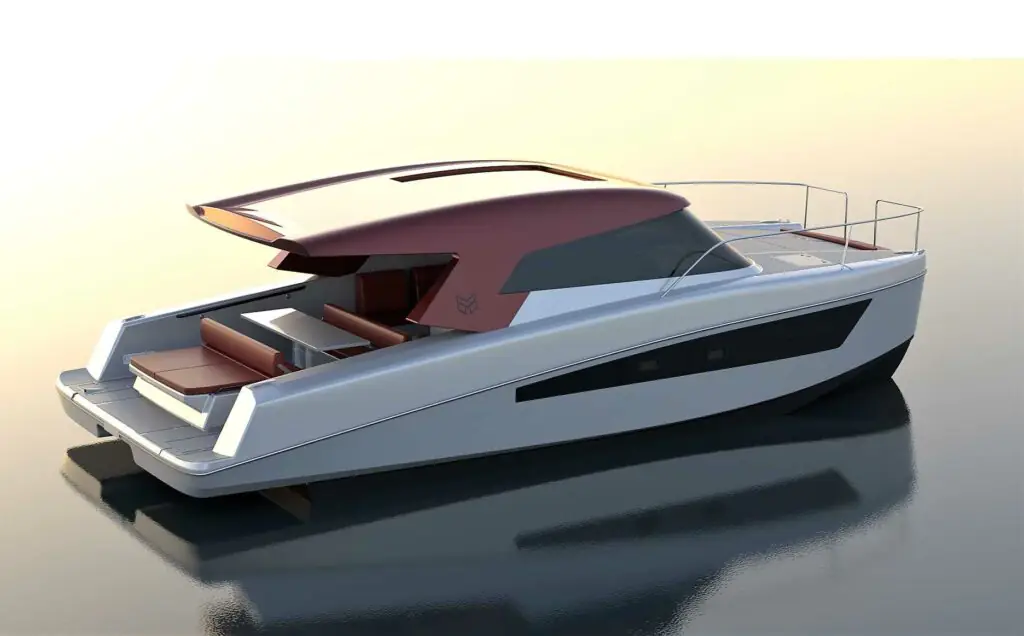
You also designed the MAKAI M42, could you please tell us more about the bigger boat and its main features?
Although every boat is always a compromise, we say that on the 42 footer, it is easier to combine a good sporty design and the technical elements that this size requires. The 42 leaves nothing on the table – it really is very well equipped. But consider the large power catamarans on the market now, and the boxy shapes we try to avoid. The M42 is remarkable in combining new lines with all of those technical options the owners want.
What are the differences between the MAKAI M37 and M42 hull designs?
The M37 has parameters that bring it more towards the planning range. On the contrary, the M42 has hulls work very well in the displacement regime and are designed to offer minimum friction and maximum autonomy. The navigation programs of the M37 and the 42 are substantially different. These two models are the benchmark in planing and displacement respectively.
What do you think are the general advantages of the power catamaran against monohulls? What do you think attracts customers opting for a multihull?
The catamaran can be seen as a boat that has the habitability and liveability of a much larger monohull. So it’s a winning option in terms of handling and size. In hydrodynamic terms, it has excellent performance with the same consumption, and don’t forget the catamaran requires no stabiliser that you really do need on a larger monohull yacht. It’s great to have a design platform like the MAKAI catamarans, and have the form stability to avoid complicated stabilisers – and consider how much budget this saves. As fuel prices increase, more and more people will seek out catamarans knowing they can save on the fuel budget and reduce ecological impact. From there, they will discover all of the other advantages in terms of layout, stability, privacy, draft, and range.
“The MAKAI 42 – a 42 foot is easier to combine a good sporty design and the skill that this size requires.”
Who do you think would be an ideal M37 customer, what is the target market?
I think the M37 can satisfy the needs of a very, very wide clientele of owners. It suits the Mediterranean, Florida, the Baltic Sea… how many boats can do that in this size range?
Can you tell us more about the hull design – given that fuel efficiency is extremely important to MAKAI, why did you choose a planning hull design, and how does this help achieve such impressive fuel economy?
As previously mentioned, the peculiar characteristics of the catamaran are its high aspect/ratio. Thin and long hulls necessarily lead to a reduction in consumption at the same speed. The sporty vocation of the MAKAI 37 suggested the use of hulls that were performing even in planning or semi-planing conditions. The distribution of volume, the stern sections and the correct positioning of the skids are all important aspects to consider.
Why was inboard sterndrive chosen as the standard drive system – what advantages does this offer?
The inboard sterdrive turns out to be practical, effective, and versatile. It allows to have a more spacious cockpit compared to outboard and is not excessively cluttered inside the boat. It removes the need for a bowthruster – because the drives articulate. We know that sterndrive is not the first choice for all buyers, and that’s why we made a very nice direct drive option (the “surface drive” is a straight shaft). But for many buyers the sterndrive is perfectly sufficient, and you may be surprised at the efficiency. It’s far more efficient than an outboard motor and much quieter as well.
You have selected a semi-asymmetrical hull shape, can you tell us why this hull shape was preferred over traditionally asymmetrical or symmetrical hulls?
The semi-asymmetric hull shape is a good compromise to minimise the wetted surface and to not lose the internal ability. The boat is also more agile to drive. It contributes the the “air-glide” system where air and vapour are funnelled between the hulls. This creates a softer ride (reduces slamming). Finally, consider the front of the hulls – they have that feminine curve and a sense of style that works well in our style.
For more details of all MAKAI Power Catamarans model, get in touch with us at info@makaiyachts.com
